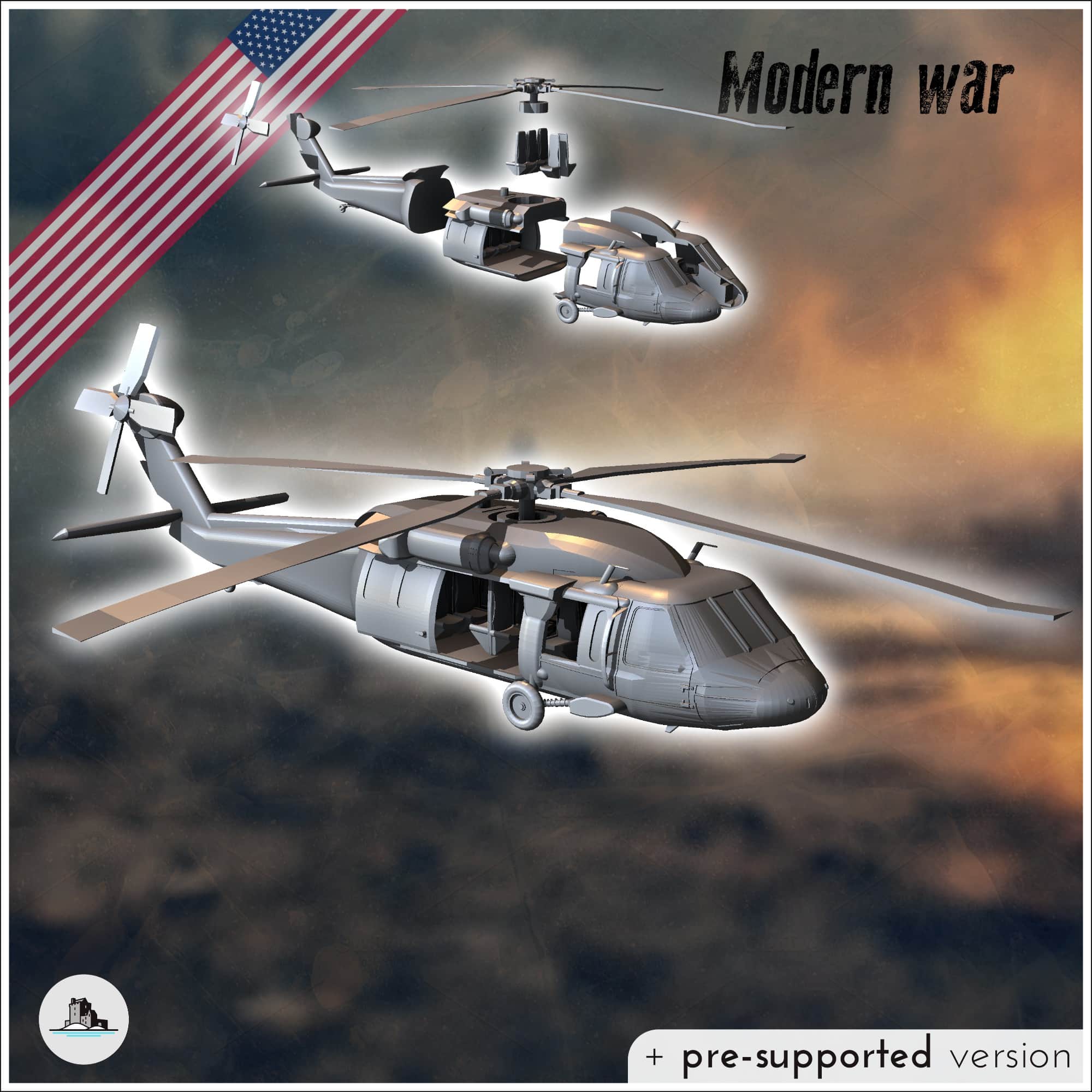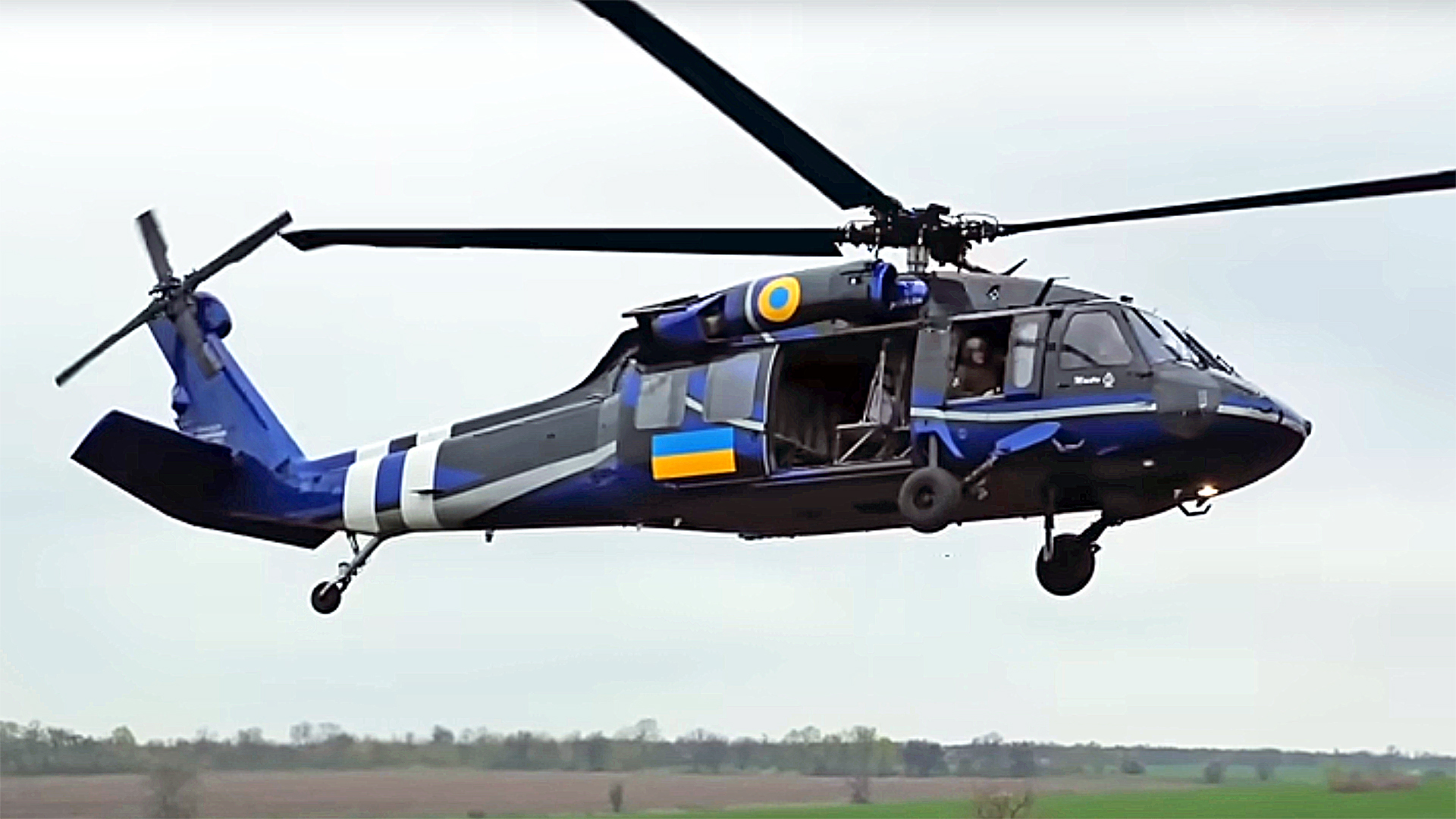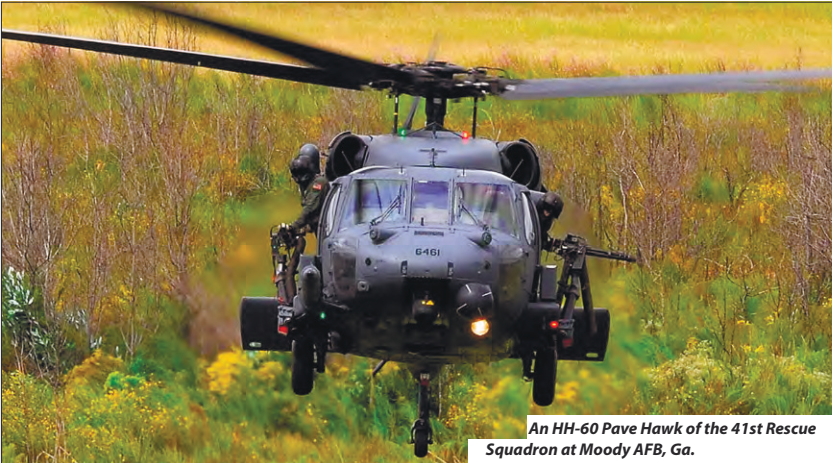Whatever You Required to Know Regarding the UH 60 Helicopter
The UH-60 helicopter, a foundation of U.S. Military air travel since its launching in 1979, represents a remarkable mix of engineering and operational adaptability. Understood for its phenomenal speed and range, the UH-60 has been adjusted for different objectives, from troop transport to clinical emptying. As armed forces demands develop, so also does the helicopter, with continuous innovations targeted at boosting its capabilities and integrating contemporary technologies. To totally appreciate the significance of the UH-60 in contemporary military operations, one must consider its background, design, and the future technologies that might redefine its role.
Background of the UH-60
Established in the late 1970s, the UH-60 Black Hawk helicopter became a response to the united state Military's need for a functional energy helicopter that could do a selection of missions under tough conditions. The catalyst for its layout was the imperfections recognized in the earlier helicopters used throughout the Vietnam War, particularly in regards to speed, survivability, and maneuverability.
The Black Hawk was developed by Sikorsky Airplane, integrating innovative innovations and materials to enhance its efficiency and durability. It was formally introduced right into service in 1979, promptly becoming an important property for armed forces operations - uh 60. Its ability to transfer soldiers, clinical evacuation, and logistical support in both battle and altruistic missions made the Black Hawk a very useful element of the U.S. Military's air travel fleet
Throughout the years, the UH-60 has actually been constantly updated, adapting to the changing nature of warfare and the evolving needs of contemporary armed forces operations. Its operational history includes participation in significant problems, peacekeeping objectives, and disaster alleviation initiatives, solidifying its reputation as a reliable and trustworthy helicopter in different environments worldwide.

Style and Specifications
The layout of the UH-60 Black Hawk helicopter consistently mirrors a commitment to functional performance and flexibility. Developed by Sikorsky Airplane, this medium-lift utility helicopter features a streamlined, aerodynamic body that enhances speed and maneuverability. Its tandem blades system, characterized by 2 counter-rotating blades, minimizes resonance and increases lift capacity, enabling more secure operations in varied atmospheres.
The UH-60 is powered by two T700-GE-701C turboshaft engines, giving a maximum speed of around 180 knots and an array of around 400 nautical miles. Its robust airframe is constructed from sophisticated composite products, ensuring sturdiness while keeping a reasonably low weight. The helicopter has an optimum gross weight of regarding 22,000 extra pounds, sustaining a functional haul setup.

Objectives and functions
A functional platform, the UH-60 Black Hawk helicopter offers a plethora of roles and goals within army operations. Designed mostly for army transport, it is capable of lugging approximately 11 soldiers, making it a vital property for quick implementation and logistical assistance.
In addition to troop transportation, the UH-60 excels in clinical discharge (MEDEVAC) objectives, geared up with sophisticated clinical devices to give important care during transportation. Its capacity to operate in diverse environments boosts its efficiency in fight search and rescue (CSAR) operations, where swift removal of employees is crucial.
The helicopter also plays a substantial function in reconnaissance and surveillance objectives, utilizing onboard sensing units and equipment to click to read debrief. Moreover, its versatility includes logistical assistance, qualified of moving supplies and equipment to onward running bases - uh 60.
In fight procedures, the UH-60 can be equipped with numerous weapon systems, enabling it to offer close air support. Its multi-role capacity makes the Black Hawk a vital tool for contemporary military pressures, adapting effortlessly to the advancing needs of battlefield situations and making certain goal success throughout a variety of functional contexts.
Performance and Capacities
Recognized for its robust performance, the UH-60 Black Hawk helicopter boasts remarkable capabilities that boost its functional effectiveness throughout various missions. uh 60. This multi-role airplane is equipped with effective twin-engine Turbomeca Arriel 1D1 engines, supplying extraordinary rate and maneuverability, with a maximum cruise ship rate of roughly 150 knots and an operational variety of around 400 maritime miles
The Black Hawk's innovative avionics and fly-by-wire control systems significantly enhance trip security and handling, permitting it to run in varied atmospheres, consisting of damaging weather problems. Its adaptability is additional exhibited by its capacity to bring as much as 11 completely geared up this soldiers or a payload of around 8,000 extra pounds, making it excellent for army transportation, clinical evacuation, and logistical assistance missions.
Additionally, the UH-60 is created for survivability, including enhanced airframes, ballistic defense for staff and passengers, and progressed countermeasure systems to avert risks. The helicopter's dexterity and rate, incorporated with its capacity for quick implementation, make it an important asset in modern armed forces procedures, making certain that it stays a key element of tactical air support and battleground flexibility.
Future Developments

One considerable focus is the combination of innovative avionics systems, which will boost situational understanding through enhanced navigating and communication abilities. This includes the prospective usage of man-made knowledge to assist pilots in decision-making and objective planning.
Furthermore, future versions may include sophisticated materials and style features to reinforce the helicopter's sturdiness and reduce its radar signature, boosting survivability in objected to settings.
The intro of hybrid-electric propulsion systems is likewise imminent, aiming to enhance gas efficiency and minimize logistical burdens. Such innovations could expand operational variety and reduce the helicopter's ecological footprint.

Final Thought
The UH-60 helicopter represents a considerable improvement in army aviation because its intro in 1979. Its robust design, versatile capacities, and continual upgrades ensure its relevance in numerous operational roles, including army transportation and medical discharge. As innovation proceeds, future advancements will likely improve its efficiency with the assimilation of fabricated knowledge and hybrid-electric systems. The UH-60's enduring presence highlights its crucial function in modern armed forces operations and highlights the ongoing advancement of armed forces aeronautics modern technology.
The UH-60 helicopter, a cornerstone of U.S. Military aeronautics given that its launching in 1979, stands for an impressive blend of design and operational convenience. As army demands progress, so too does the helicopter, with recurring developments aimed at boosting its abilities and integrating modern-day innovations.The style of the UH-60 Black Hawk helicopter constantly shows a dedication to operational performance and convenience. Developed by Sikorsky Aircraft, this medium-lift utility helicopter includes a sleek, wind resistant fuselage that enhances rate and maneuverability.The UH-60 helicopter stands for a significant improvement in military air travel given that its introduction in 1979.